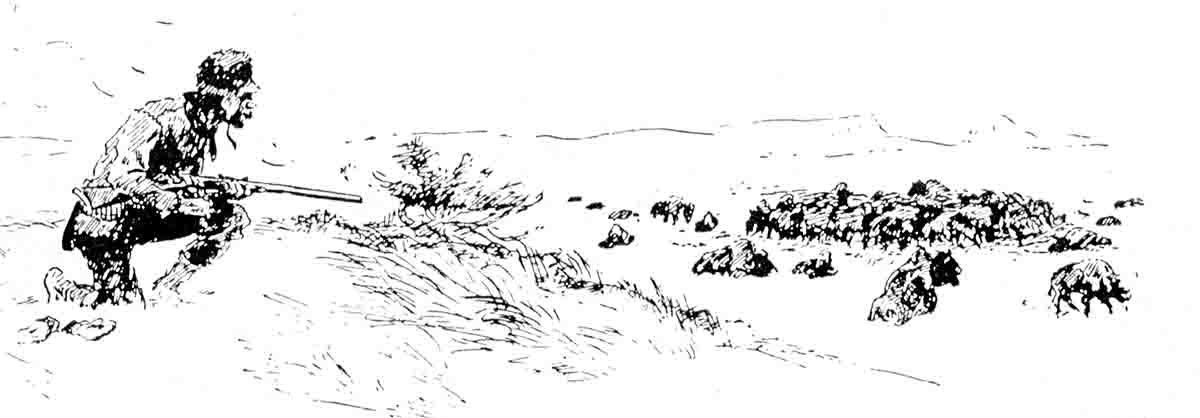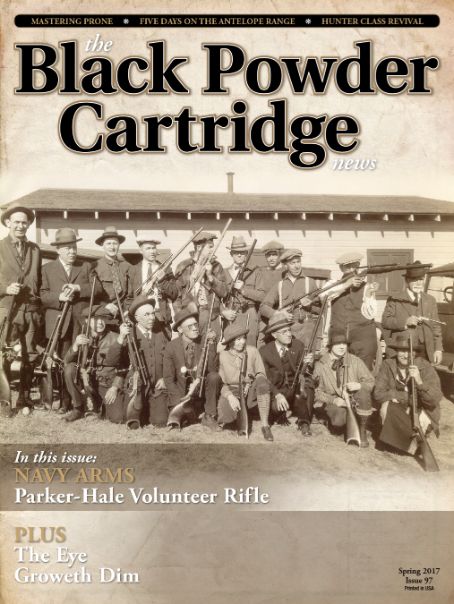A Hunter Class Revival?
feature By: Steve Garbe | April, 17
Now that it seems like BPCR Silhouette has been plucked from the brink, thanks largely to the efforts of Jim Kidwell, it would seem that the time is ripe for an intelligent discussion on the feasibility of incorporating “Hunter Class” Silhouette into the National Championships.

A quick description of Hunter Class is in order. The course of fire, times and targets are exactly the same as regular Iron Sight or Scope competition, with these differences:
- Targets do not need to be shot in a particular order.
- There is no restriction on the number of shots that can be fired within the standard Silhouette time period.
- There is no weight restriction on the rifle other than the same firearm (including the barrel) must be used for all four distances.
- Scorers do not need to be notified when the competitor is “going for score.”
- The competitor is not allowed a spotter or coach.
Simply put, the competitor is allowed the standard amount of time for firing as regular silhouette and after that time has elapsed, the number of targets that have been knocked down are counted. It is very simple for the scorer to record scores, as the worry of targets shot out of order or extra shots fired does not enter in. The obvious advantages to the shooter are more than countered by the fact that no coaching or spotting is allowed. The shooter must judge the conditions and solve the shooting problems for himself. More than the NRA-sanctioned BPCR Silhouette, Hunter Class is a practical-style match that really puts the onus of solving condition problems on the shooter. There are various long-range competitions, which are becoming quite popular that are doing the same thing.
Given my experience with Hunter Class, I can tell you that it is a very challenging and educational shooting experience. All Hunter Class competitors are on the same playing field; there is no advantage gained from an experienced spotter calling wind corrections. This appeals most to new shooters who show up at Nationals without a spotter who they have been working with throughout the shooting season. I have long held that BPCR Silhouette is a “team” competition and should be awarded in that fashion; much depends on the quality of spotting that the shooter receives. Hunter Class demands that the shooter also understands the effects of wind, light and mirage rather than relying on a coach/spotter to make those calls for him. As such, Hunter Class is a true “individual” shooting competition.
Hunter Class also requires a rifle that works in a practical fashion. Too much required “babysitting” restricts the number of shots that can be fired in the allotted time period. Hunter Class ultimately puts an emphasis on a practical field rifle that can be fired swiftly and accurately by a competent marksman. Given that there are no specific weight restrictions for rifles other than the same rifle must be used for offhand, new shooters showing up with a rifle that doesn’t “make weight” isn’t a problem. Stock-dimension requirements are the same as Scope Class for BPCR Silhouette, and a Shooters Jury is selected from the ranks of competitors to handle any disputes or protests.
Another positive twist to Hunter Class: Junior shooters who cannot tolerate the recoil of .40- and .45-caliber rifles that meet the regular 12-pound, 2-ounce limit can shoot a heavier rifle, thus giving them a firearm with sufficient power to topple rams without abusive recoil. They simply forego the offhand chickens and, in the vast majority of cases, end up with a better score than trying to shoot the longer targets with a light caliber. I remember watching a young shooter hit five or six rams with a lightly loaded .38-55 and ring every one of them. His father had to explain that even though he hit them, he couldn’t count them for score. That he was mightily disappointed goes without saying. Letting juniors compete with a rifle that has the same ballistic advantages as enjoyed by the adults goes a long way toward encouraging a new young shooter.
Hunter Class Silhouette has in the past been run as its own match. However, I find no reason that it could not simply be recognized as a special category within the regular National Championship competition. There is nothing about Hunter Class that would overly complicate the scorer’s duties. Given the categories of Woman, Senior, Super Senior and Youth, Hunter Class would simply be another designation on the scorecard. As Hunter Class is an “Any Sight” match, the scorekeeper does not even need to identify whether the competitor is shooting Scope or Irons. The “Any Sight” designation also does not turn away shooters who do not own a scope but would like to participate, as well those older shooters who need a scope to compete.
As we work toward restoring BPCR attendance to its record highs, it makes sense to reintroduce shooters to this excellent competition. One sees a movement toward this style of shooting in the Creedmoor Challenge match at Ben Avery as well as the 1,000-yard Buffalo match at Byers. In my opinion, it was a very successful and rewarding competition in the past and should be part of the BPCR future.
I would welcome input from other competitors, especially those who have participated in Hunter Class, as well as from our new BPCR Match Directors. Hopefully, we can have an intelligent discussion about the possibilities and opportunities.


